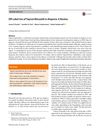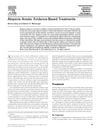Hair Loss Myths: Evaluating Common Misconceptions with Evidence
July 2017
in “
PubMed
”
TLDR Many hair loss myths lack strong evidence, but some treatments are proven to work.
The review titled "Hair Loss Myths" from 2017 addressed common misconceptions about hair loss that patients often bring to dermatology clinics. The authors identified 12 prevalent myths related to minoxidil treatment, vitamin and mineral supplements, natural topical treatments, and hair care practices. Through a PubMed search, they found little evidence supporting many of these myths. While some randomized controlled trials indicated the effectiveness of certain treatments, there was a general lack of sufficient trials to evaluate various therapies and practices. The review recommended guiding patients towards treatments with proven efficacy and away from those with limited scientific backing.






